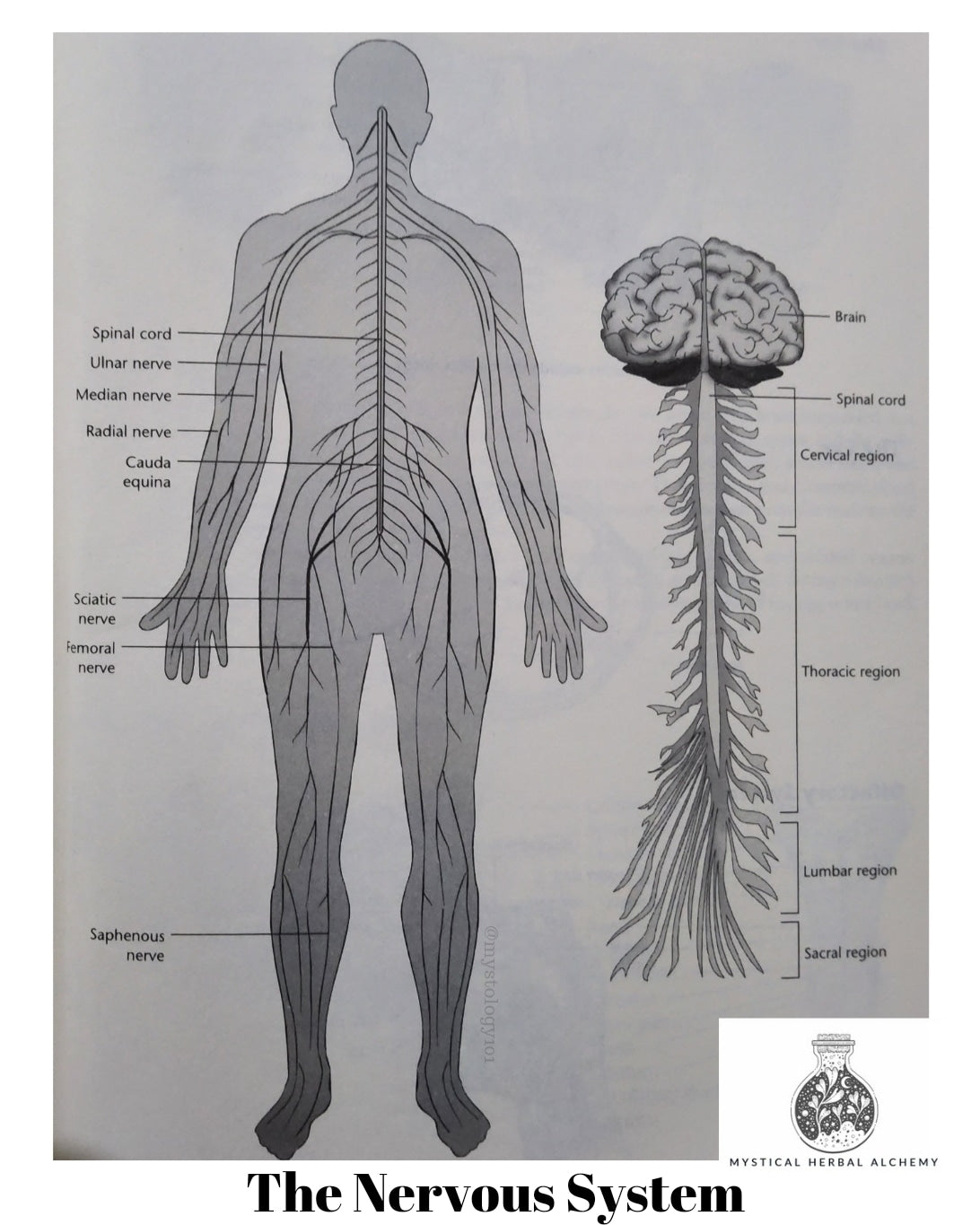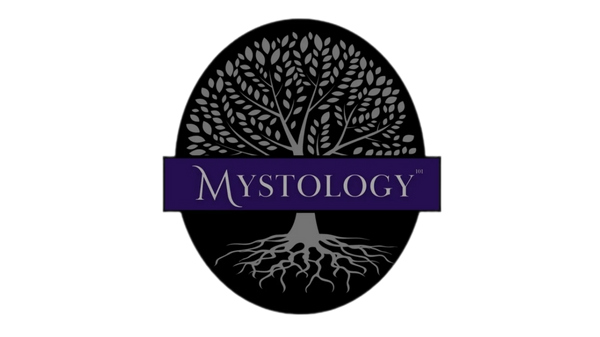
Working the Nerves - Inside the CNS - Part 1 The Brain
Is it just me or is there alot working on the nerves lately?
Simplicity has become a thing of the past. The human population has become a huge weight on natural evolution, bringing with it all the pressures of "society". Life on earth is becoming heavy. I am witnessing an influx of people suffering at the cards of "life" but is it really life or is it society's pressures that are beginning to work the Nerves.
Being a bit more mindful...
The past few months I found myself adopting a saying "life just be lifing" and whats scary is knowing who I am and what I align self too, I didn't fully acknowledge that through the humor in my word play, I was setting myself up for a negative take over. Through the unconscious rehearsal of these words be it outload or in my mind, I was prompting and reprogramming my system with a set of instructions set on the theory that at this particular point in my journey all what I was facing in what I refer to as my down season is just life,, all thats going wrong (impatience), all that frustrates (impatience), my burnout (again impatience) was life and I just had to deal with it. But the truth is, life wasn't and is not to blame, my attitudes towards life was, and I am now equiped with the awareness that the only reason I worked my nerves (stress) was because I chose to adopt a set of attitudes and create an unconscious programming that had the potential to intersect and take over changing how I see /reacted to the occurances of life. Hence we have the power to create | change our individual reality.
And this is what led me to write this blog post. Its so easy to take life for granted but then pass the blame and not hold self accountable for what is.
We are given a physical body equiped with its own innate inteligence to grow and adapt, heal and restore, balance and excrete. But its not commonly spoken on. And if its not commonly spoken on how do we as a people learn how to operate and moving unison in such a complex and sophisticated system.
In positive light I willed a reverse and imagined a life where better always reigns. This life I presently imagine is filled with daily mantras, positive insight and upliftment, nourishment in all forms to benefit every bodily system - simplicity leading to when you know better you do better. And in this respect when you know how and why your human system works the way it does, you recognise what effects and affects, you'll start to reprogramm your entire system for better performance.
So today I want to focus on The Central Nervous System (CNS). Why the CNS, well this is because this is where the order starts. Its the highest physical point in the human body and ultimately it controls how all the other bodily systems fall into alignment.

The nervous system is responsible for distribution of information within the human body. As seen in the above diagram the nervous system is split into two parts. The first being the central nervous system which includes the brain and spinal cord, and the second is the peripheral nervous system, which includes the rest of the neural network within the body, the cervical (neck), thoracic (chest), lumbar (lower back), sacral (pelvis) all of which branch off from the spine.

The Central Nervous System (CNS) is composed of the brain and spinal cord.
The CNS plays the role of the control centre, taking responsibility for majority bodily functions, including awareness, movements, sensations, thoughts, speech and memory. The spinal cord serves as a conduit for signals between the brain and the rest of the body while controlling simple musculoskeletal reflexes without input from the brain.
In a nut shell the CNS is responsible for integrating all sensory information and responding accordingly as well as controlling internal organs.
The Brain
The brain is one of the largest and most complex organs in the human body. It is made up of more than 100 billion nerves that communicate in trillions of connections called synapses. The cortex is the outermost layer of brain cells and together with the spinal cord makes up the central nervous system.
The brain serves as the main control centre to the CNS, controlling our thoughts, memory, emotion, touch, motor skills, vision, breathing temperature and hunger as well as making decisions as to instructions sent to other parts of our bodies.

How does the brain work?
The brains job is to send and receive chemical and electrical signals throughout the body. These different signals control different processes, and it is our brains job to interpret and respond to each signal.
example. some signals may trigger a response that make you feel tired, while others may allow you feel hungry. The brain with interpret these signals and send commands to the organs or senses which you will respond to through actions. In this case either rest or food.
However not all messages are kept within the brain, some messages are relayed through the spine and across the body’s vast network of nerves to distant extremities. To do this, the central nervous system relies on billions of neurons (nerve cells).
The power of 3
Encased and protected by the skull, the brain is defined into three areas. At a glance we have;
- Cerebral Hemispheres - which is responsible for the higher functions ie. speech and hearing.
- Cerebellum - which is responsible for controlling the subconscious activities and some balance functions.
- Brainstem - which is responsible for maintaining the necessary functions of the body ie. breathing and circulation.
So how does each component within the brain work?

The Cerebrum (front of brain) comprises gray matter (the cerebral cortex) and white matter at its center. The largest part of the brain, the cerebrum initiates and coordinates movement and regulates temperature. Other areas of the cerebrum enable speech, judgment, thinking and reasoning, problem-solving, emotions and learning. Other functions relate to vision, hearing, touch and other senses.
The Cerebral Cortex is Latin for “bark,” and describes the outer gray matter covering of the cerebrum. The cortex has a large surface area due to its folds, and comprises about half of the brain’s weight. The cerebral cortex is divided into two halves, or hemispheres. It is covered with ridges (gyri) and folds (sulci). The two halves join at a large, deep sulcus (the interhemispheric fissure, AKA the medial longitudinal fissure) that runs from the front of the head to the back. The right hemisphere controls the left side of the body, and the left half controls the right side of the body. The two halves communicate with one another through a large, C-shaped structure of white matter and nerve pathways called the corpus callosum. The corpus callosum is in the center of the cerebrum.
The Cerebellum (“little brain”) is a fist-sized portion of the brain located at the back of the head, below the temporal and occipital lobes and above the brainstem. Like the cerebral cortex, it has two hemispheres. The outer portion contains neurons, and the inner area communicates with the cerebral cortex. Its function is to coordinate voluntary muscle movements and to maintain posture, balance and equilibrium. New studies are exploring the cerebellum’s roles in thought, emotions and social behavior, as well as its possible involvement in addiction, autism and schizophrenia.
The brainstem (middle of brain) connects the cerebrum with the spinal cord. The brainstem includes the midbrain, the pons and the medulla.
- The midbrain (or mesencephalon) is a very complex structure with a range of different neuron clusters (nuclei and colliculi), neural pathways and other structures. These features facilitate various functions, from hearing and movement to calculating responses and environmental changes. The midbrain also contains the substantia nigra, an area affected by Parkinson’s disease that is rich in dopamine neurons and part of the basal ganglia, which enables movement and coordination.
- The pons is the origin for four of the 12 cranial nerves, which enable a range of activities such as tear production, chewing, blinking, focusing vision, balance, hearing and facial expression. Named for the Latin word for “bridge,” the pons is the connection between the midbrain and the medulla.
- At the bottom of the brainstem, the medulla is where the brain meets the spinal cord. The medulla is essential to survival. Functions of the medulla regulate many bodily activities, including heart rhythm, breathing, blood flow, and oxygen and carbon dioxide levels. The medulla produces reflexive activities such as sneezing, vomiting, coughing and swallowing.The spinal cord extends from the bottom of the medulla and through a large opening in the bottom of the skull. Supported by the vertebrae, the spinal cord carries messages to and from the brain and the rest of the body.

What are Meninges?
Meninges are the three layers of protective coverings that surround the brain and the spinal cord.
The outer dura mater layer (Periosteal) is very hard and thick. This is because it technically has two layers (the periosteal layer of the dura mater lines the inner dome of the skull (cranium). Beneath that is the Meningeal dura mater.
All the spaces between the layers allow for the passage of veins and arteries that supply blood flow to the brain.
The next layer is called the Arachnoid mater. This layer is a thin, weblike structure of connective tissue that does not contain nerves or blood vessels. Below the Arachnoid mater is the Cerebrospinal fluid, or CSF. This fluid cushions the entire central nervous system (brain and spinal cord) and continually circulates around these structures to remove impurities.
And last but not least is the Pia mater. Another thin membrane that incases the surface of the brain and follows its contours. The Pia mater is abundant with veins and arteries.
You Lobe Brain!

Each brain hemisphere (parts of the cerebrum) has four sections, referred to as lobes(frontal, parietal, temporal and occipital), each controlling specific functions.
The largest lobe of the brain, is found in the front of the head, hense its naming The Frontal Lobe. The frontal lobe is responsible for decision making, personality, characteristics and movement. Speech and smell usually involves parts of the frontal lobe.
The middle part of the brain is called The Parietal Lobe, this helps a person to identify objects and understand spatial relationships (where one’s body is compared with objects around the person). The parietal lobe is also involved in interpreting pain and touch in the body.
The occipital lobe is situated in the back part of the brain and is responsible for vision.
The sides of the brain, is where you will find The Temporal Lobes. This is where short-term memory, speech, musical rhythm and some degree of smell resides.
While I appreciate that was alot to digest I hope you are beginning to see the correlation between the CNS, the brain (mind), and how each coincide impacting negatively or positively on the entire bodily system depending on the programme you set.
Stay tunned for part two where I will be sharing more on my findings | knowings relating to the CNS and deeper structures of the brain.
DISCLAIMER
This content is not intended to provide medical advice or to take the place of such advice or treatment from a personal physician. You are advised to consult your doctors or qualified health professionals regarding specific health questions you may have. Neither mystology.co.uk nor the publishers of this content take responsibility for possible health consequences of any person reading or following the information in this educational content.

2 comments
Yeh Yeh, Go Deh Kree X
Have only read as far as CNS so far.It’s good to read your innerstanding & overstanding of what you’ve written X